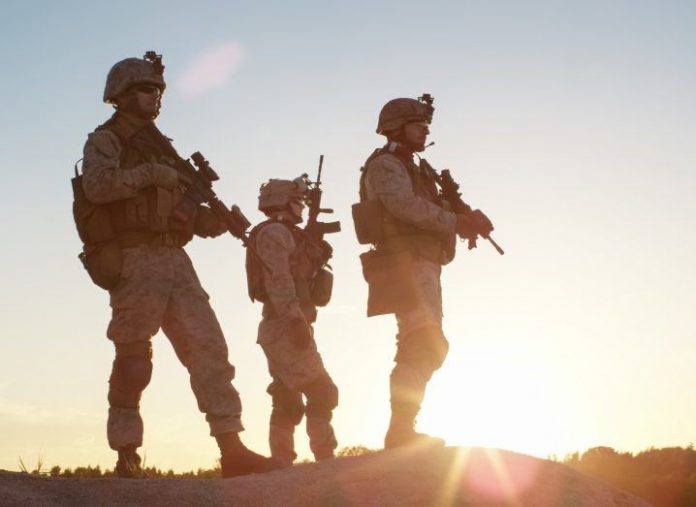This article is written by Abhinav Anand, from DSNLU, Visakhapatnam. The article deals with the international armed conflict under International Humanitarian Laws. It discusses various conventions which have led the development of international humanitarian law. It examines its current positions.
Table of Contents
Introduction
The objective behind the development of international humanitarian law is to protect the interest of the people affected by the armed conflict. The instances of people who have immensely suffered during the world wars having no connection or active participation in the wars have paved the way for the humanitarian laws. This article delves into different conventions signed to protect the interest and the concern of the people in the wars. It also discusses the reason behind the armed conflict. It examines the role of the international criminal tribunal in establishing the liabilities of the concerned state. It discusses various case laws where the international criminal tribunal has penalised the accused state for the armed conflicts.
Reason behind the conflict
These are the following reasons behind the armed conflict:
-
Power imbalances
To cope up with the trend of contemporary times every country wanted to gain superiority over others. They devise different mechanisms to weaken the policies of their counterparts. The instances of allegations put forth by the Americans that Russia has tried to meddle in the presidential election of the United States is one of the examples. The efforts of the superpower are to acquire small countries either by their diplomacy or by armed conflict.
-
Economic growth and free trade
The rapid economic growth and expanding free trade has also persuaded the country to develop the strategy of armed conflicts. The countries usually adopt aggressive methods to sell their products in other countries. The expansion plans designed by the superpower is to entirely capture major sectors of the small countries and then sell their products to them. The countries having good command over the market of other countries always have an upper hand to start the armed rebellion and easily capture the territory of the country.
-
Relative deprivation
The armed conflict may arise because of the relative deprivation of comparable power within the country. In the struggle of being in power or commanding position, it is equally significant to maintain the state of affairs. If there is any disruption in the status quo, any of the organisations start a mass scale protest against the existing regime or government it will surely lead to an armed conflict and will further make the situation worse.
-
Specific forms of the political organisation
In a bid to conquer the territory of independent states, the political organisations of different countries try to erase the other country by armed conflict. The ideology of a political organisation is the driving force behind the armed conflicts. To gain political mileage and garner the support of innocent voters the armed conflict is used as a weapon.
-
The existence of a monopoly of power and on the connection between external cohesion and internal aggression
If there is a monopoly of the power, the authoritarian regime in no way gives ample space to other organisations or the ideology to flourish in the country. It will surely lead to a state of affairs wherein there will be conflict at different levels. It also raises concerns from the neighbours and that is called as external cohesion. The external cohesion and internal aggression cumulatively lead to an armed conflict.
Relevant laws
The Geneva Conventions of 1949 and their additional protocol are given below:
-
First Geneva Convention
This convention represents the fourth updated version of the Geneva Conventions on the wounded and sick following those adopted in 1864, 1906 and 1929. It contains 64 articles. This convention provides protection not only for the wounded and sick but also for medical and religious sick, medical units and medical transports. The convention also recognizes the distinctive emblems. It has two annexes containing draft agreements.
-
Second Geneva Convention
This convention replaced the Hague Convention of 1907 for the adaptation of the maritime warfare of the principle of geneva convention. It closely follows the content and structure of the First Geneva Convention. It has specifically 63 articles applicable during the war at sea. It has one annexe containing a model identity card for medical and religious personnel.
-
Third Geneva Convention
This convention replaced the prisoner of war convention of 1929. It contains 143 articles whereas the convention of 1929 contained only 97 articles. The category of person under the status of prisoner of war has been enlarged and it has covered different categories of people under its ambit in comparison with the previous two conventions. The conditions and place of captivity are more precisely defined and categorised. It has specifically mentioned the kind of relief, remuneration, financial assistance given to the people under the status of prisoners of the State. It has also categorically mentioned the judicial proceedings instituted against them. The convention establishes a principle about the repatriation and releases without any delay after the active hostilities came to a halt.
-
Fourth Geneva Convention
The Geneva Convention which was adopted in 1949 was only concerned with the combatants. The events of World War II were considered while implementing these conventions. It has not only broadened the horizon but also provided different kinds of relief to the civilians who have suffered the wars. It comprises 159 articles. It also has a specific section which protects the general population during the wars. The additional addendum was made in the protocol in which the relief was laid down for the people who have suffered the hostilities.
-
The protocols additionals to the geneva conventions
In 1977, the two protocols additional to the Geneva conventions were adopted at an international diplomatic conference to protect the victims of the national and international armed conflict. It has been ratified by many countries. The countries who have signed the Geneva conventions but not ratified the additional protocols are also governed by these protocols. The protocol has included the protection of civilians, women, children, measures for the protection of journalists. Further, it is also provided that the International Red Cross Society, international non-governmental organisations can provide assistance if permitted by the parties to the conflict. The dams, dikes and places of worship cannot be attacked. The use of weapons that causes superfluous or unnecessary injury or the weapons that cause widespread and long term injury is prohibited. The recruitment of children under 15 years of age is prohibited. It also outlawed the indiscriminate attack on the civilians and the necessary items such as food and water. It is a war crime to use the emblems under geneva convention to deceive the other state or do any other form of treachery.
Cases of the armed conflict
Conflict in Syria
In the year 2011, the protestors in Syria were demanding the release of the political prisoners and reformation in politics. Despite the peaceful protest of the people the Syrian government forces resorted to suppress the protest by using real arms and ammunition. The protest by that time has already spread in many parts of the country. The protestors were tortured, thrashed and maltreated in different ways by the governmental forces. The government has used military tanks and other lethal weapons used during the wars to suppress the protestors. This has further surcharged the atmosphere and the protestors started getting support from the other countries such as Lebanon, Saudi Arabia.
The UN Security Council has taken the matter seriously and condemned the violence by the governmental forces. The European Council has imposed a ban on the export of Syrian oil, suspended the bank account of Syria in the states of the European Union and prohibited the travel of some Syrian officials.
In the beginning stage, Syrian government tried to negotiate with the protestors by removing the hostilities of the government forces but by that the mass protest has taken a huge shape so any efforts of the government are worthless. Syria has also invited international players to observe the action of the state and to implement the plan proposed by the League of Arab Emirates.
To mitigate the hostilities in Syria the United Nation Security Council has adopted resolution 2042 authorising the United Nation Supervision Mission in the Syrian Arab Republic. After some time due to intensified, the mission was called off.
After some time, some members within the Syrian army and security forces openly expressed their disapproval from the governmental forces of Syria and their way of operations. It led to the formation of the Free Syrian Army. The Free Syrian Army started mobilising other similar kinds of the army at the local level and full-fledged armed conflict started in Syria.
Prosecutor vs. Slobodan Milosevic
In this case, the meaning of the armed conflict was continued to be developed by the international criminal tribunal for the former Yugoslavia. Specifically, the court considered for an armed conflict to exist, as opposed to terrorism or mere internal unrest, after an amicus curiae motion was brought before the court arguing that no such conflict existed prior to 24th March 1999. It was argued there was no case to answer for war crimes under Article 3 of the statute of International Criminal Tribunal for the former Yugoslavia. It was also contended that prior to 24th March,1999 there was no armed conflict or protracted armed tussle. It was just an act of banditry, unorganised or short-lived insurrection or the terrorist activities.
The trial chamber has emphasized on the test laid down by them to determine the armed conflict. Court after perusing the modalities and methods adopted by the hostile country stated that the circumstances do not indicate any kind of non-armed conflict in the country. The references were made by the decisions of the other chambers wherein the relevant factors such as mobilisation of the government forces and the frequency of attacks has been considered as the parameter to consider the act as internal armed conflict.
Italy vs. Abdelaziz
In this case, the Italian cassation court had to distinguish between the definition of terrorism and other such movements of national liberation. The Italian law had previously categorised the war under the guerilla war, the war against oppression, and the national war movements. The people involved in these wars were given protection by the authority and were not subjected to legal punishments.
In this case, the defendants were the foreign nationals who were charged with aiding and abetting the people to join the militant group across the world. They deployed many people to the Islamic terrorist organisation. They were charged under Section 270 of the Italian criminal code. The issue before the court was whether supporting paramilitary activities in the middle east can be considered as propagating and practising the terrorism.
The Supreme Court convicted the accused. The court applied the broad meaning of the terrorism under the International Convention for the suppression of the financing the terrorism, 1999.
Conclusion
The applicability of International Humanitarian Laws should be made dynamic. The instances of ethnic cleansing, internal armed conflicts are rampant in the recent past. The international criminal tribunal should strictly punish the perpetrators. The victims of the armed conflict should be rehabilitated properly. The prisoners of war should be allowed to pursue special skill development so that they can live their life happily. The international red cross society should increase their charity work to educate the children whose parents have lost their lives in armed conflicts. The mass campaign should happen at a global level to curb armed conflicts. The establishment/organisation/country responsible for any such armed conflict must be directed to compensate the losses incurred by innocent people and a sanction should be imposed by the international community so that it can become a precedent and act as a deterrent for any such acts in future. The Universal Declaration of Human Rights has become the Magna Carta of the human rights of the people, so it should be implemented in letter and spirit.
References
- http://digitalcommons.wcl.american.edu/cgi/viewcontent.cgi?article=1661&context= au ilr
- http://digitalcommons.wcl.american.edu/cgi/viewcontent.cgi?article=1661&context=auil r
- https://www.icrc.org/en/war-and-law/treaties-customary-law/geneva-conventions
LawSikho has created a telegram group for exchanging legal knowledge, referrals and various opportunities. You can click on this link and join:












